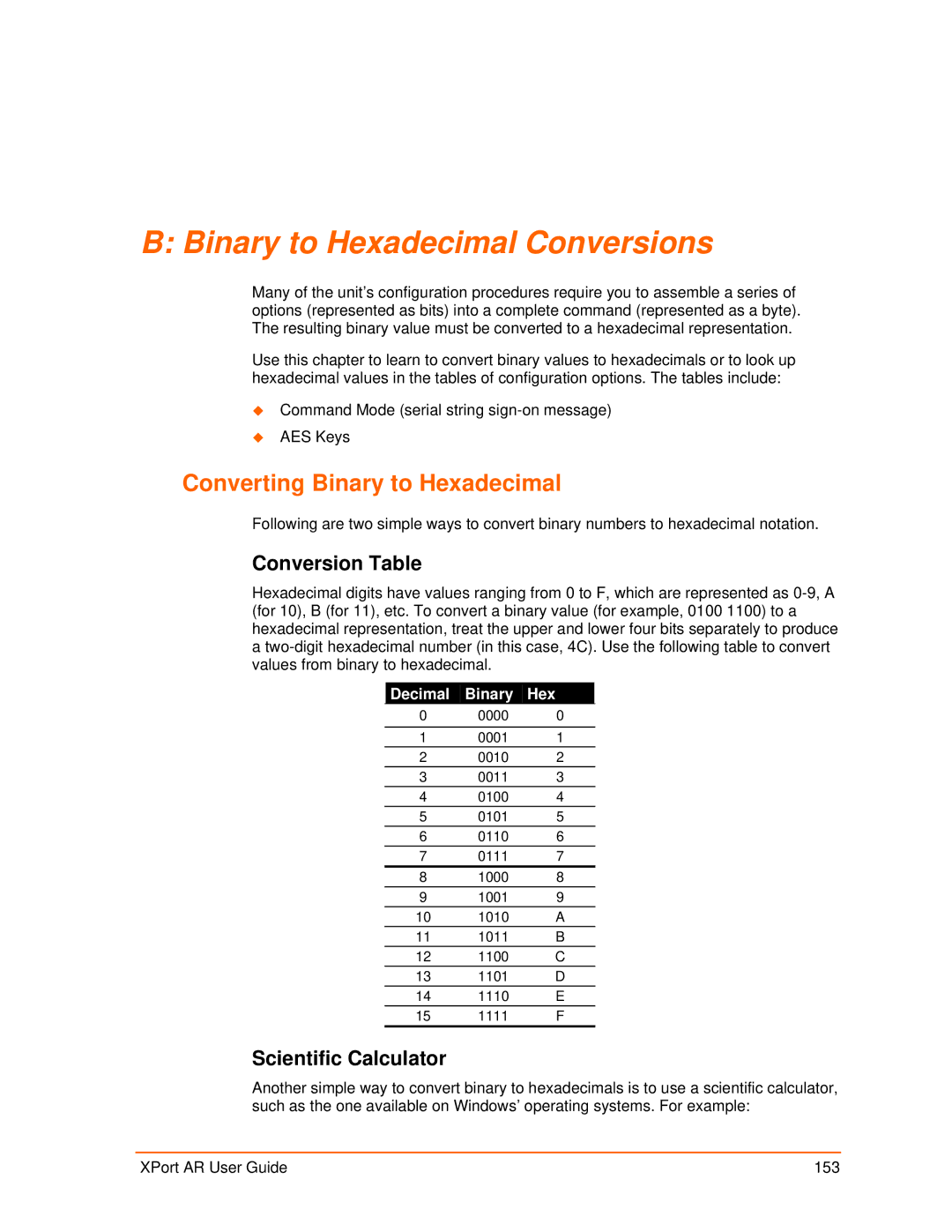B: Binary to Hexadecimal Conversions
Many of the unit’s configuration procedures require you to assemble a series of options (represented as bits) into a complete command (represented as a byte). The resulting binary value must be converted to a hexadecimal representation.
Use this chapter to learn to convert binary values to hexadecimals or to look up hexadecimal values in the tables of configuration options. The tables include:
Command Mode (serial string
AES Keys
Converting Binary to Hexadecimal
Following are two simple ways to convert binary numbers to hexadecimal notation.
Conversion Table
Hexadecimal digits have values ranging from 0 to F, which are represented as
| Decimal |
|
| Binary |
|
| Hex |
|
|
|
|
|
|
| |||
0 |
| 0000 |
| 0 |
| |||
|
|
|
|
|
| |||
1 |
| 0001 |
| 1 |
| |||
2 |
| 0010 |
| 2 |
| |||
3 |
| 0011 |
| 3 |
| |||
4 |
| 0100 |
| 4 |
| |||
5 |
| 0101 |
| 5 |
| |||
6 |
| 0110 |
| 6 |
| |||
7 |
| 0111 |
| 7 |
| |||
8 |
| 1000 |
| 8 |
| |||
9 |
| 1001 |
| 9 |
| |||
10 |
| 1010 |
|
| A | |||
11 |
| 1011 |
|
| B | |||
12 |
| 1100 |
|
| C | |||
13 |
| 1101 |
|
| D | |||
14 |
| 1110 |
|
| E | |||
15 |
| 1111 |
|
| F | |||
Scientific Calculator
Another simple way to convert binary to hexadecimals is to use a scientific calculator, such as the one available on Windows’ operating systems. For example:
XPort AR User Guide | 153 |
